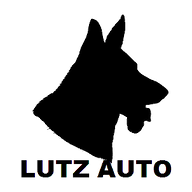Zjohnsonua
SILVER Star
I haven't found a list of ODBII signals; I doubt one exists publicly. If it does, someone has backtraced it.
If I understand you correctly, the transmission temperature signal, as near as I can make out, is only connected to the high limit switch on the ECU, which is also connected to the light (not the MIL, for some reason) on the combo meter.
Toyota, in its infinite wisdom decided to shut off the engine if the engine oil level is low, but not if the transmission overheated. Maybe they thought the likelihood of occurrence was too low to warrant it. Anyway, I can't find any documentation to suggest the signal goes anywhere else.
AFAIK, there is no OBDII transmission temperature signal at all. The Toyota test equipment may have access to it, but the OTC OBDII tools do not. It would be nice if there was a factory Toyota tech on here that had access (either currently or in the past) to the dealer tools who could say for sure. I haven't tried using Techstream to find the signal; I'll put that on the list.
OBDII supports trans temp and many others that aren't regularly used (described in the very dry and nerdy SAE J1979 standards). I have it active as a built in PID via Torque Pro, which is using a clustered set of PIDs based on which model you select. I forget where I found it in the app, but it wasn't intuitive.



